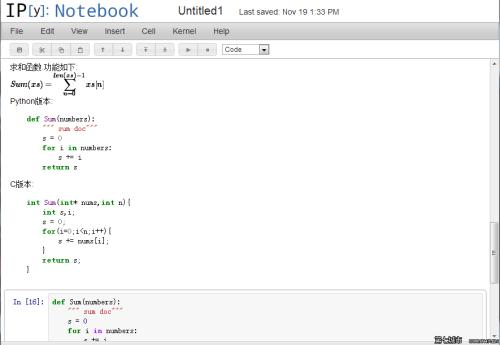Proteins are the main workhorses of biological functions in a cell, a tissue, or an organism. Identification and quantification of proteins in a given sample, e.g. a cell type under normal/disease conditions, are fundamental tasks for the understanding of human health and disease. In this paper, we present DeepNovo, a deep learning-based tool to address the problem of protein identification from tandem mass spectrometry data. The idea was first proposed in the context of de novo peptide sequencing [1] in which convolutional neural networks and recurrent neural networks were applied to predict the amino acid sequence of a peptide from its spectrum, a similar task to generating a caption from an image. We further develop DeepNovo to perform sequence database search, the main technique for peptide identification that greatly benefits from numerous existing protein databases. We combine two modules de novo sequencing and database search into a single deep learning framework for peptide identification, and integrate de Bruijn graph assembly technique to offer a complete solution to reconstruct protein sequences from tandem mass spectrometry data. This paper describes a comprehensive protocol of DeepNovo for protein identification, including training neural network models, dynamic programming search, database querying, estimation of false discovery rate, and de Bruijn graph assembly. Training and testing data, model implementations, and comprehensive tutorials in form of IPython notebooks are available in our GitHub repository (https://github.com/nh2tran/DeepNovo).
翻译:蛋白质是细胞、组织或生物体中生物功能的主要工作马匹; 在正常/疾病条件下的细胞类型等特定样本中蛋白质的识别和量化是了解人类健康和疾病的基本任务; 在本文中,我们介绍DeepNovo,这是一个深层次的基于学习的工具,旨在从同步质谱测量数据中解决蛋白质识别问题。这个想法最初是在 " 创新 " 测序[1]的背景下提出的,在这一测序中,使用同源神经网络和经常性神经网络从其频谱中预测一个Peptide的氨酸序列,这是从图像中产生标题的类似任务。我们进一步开发DeepNovo,以进行序列数据库搜索,这是从许多现有的蛋白质数据库中大有裨益的一种主要识别方法。我们将两个模块的无序测序和数据库搜索整合成一个单一的深层次识别框架,并整合了de Brujinjin 图形组装技术,为从同步质谱质测量数据中重建蛋白质序列的完整解决方案。 这份论文描述了“深NovoH " 数据模型 " 的模拟 " 数据库 " 的模拟 " 的模拟 " 的模拟 " 和 " 数据 " 的模拟 " 的模拟 " 、 " 、 " 、 " 数据库的 " 、 " 、 " 的模拟 " 数据 " 的 " 数据 " 、 " 、 " 、 " 、 " 、 " 、 " 测试 " 的 " 、 " 、 " 测试的 " 数据的 " 数据库的 " 、 " 、 " 数据的 " 数据的 " 数据的 " 数据的 " 数据的 " 数据的 " 数据的 " 、 " 、 " 数据的 " 、 " 、 " 数据的 " 、 " 、 " 数据的 " 、 " 、 " 、 " 、 " 、 " 、 " 、 " 、 " 、 " 数据的 " 的 " 的 " 测试的 " 、 " 、 " 、 " 、 " 、 " 、 " 、 " 、 " 、 " 、 " 、 " 、 " 、 " 、 " 、 " 、 " 、 " 测试的 " 、 " 、 "





